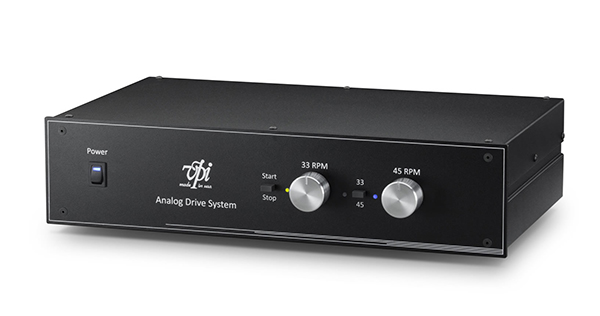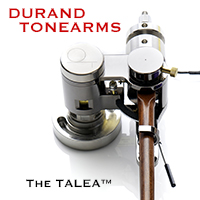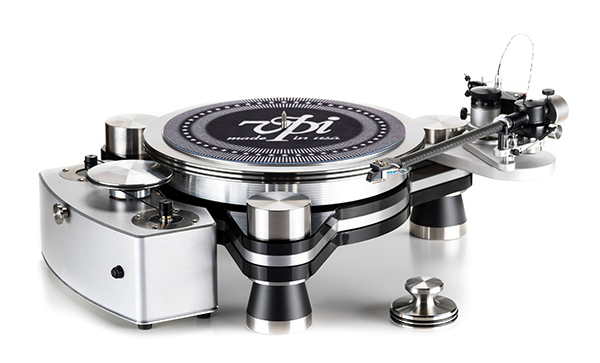VPIs Avenger Reference Turntable
 VPI has done as much to advance the resurgence of vinyl playback over the past decade as any turntable manufacturer going.
VPI has done as much to advance the resurgence of vinyl playback over the past decade as any turntable manufacturer going.
When vinyl was on life support and the consumer audio industry had its collective hands tugging on the plug, VPI pumped iron, took its vitamins and kept on keeping on. This gave VPI a running start into Vinyl’s second coming and they took full advantage. VPI has done a great job developing its product line and provide an upgrade path that can often extend a turntable’s life span for years on end. The recently retired TNT lived on for nearly two decades, an amazing by any standard. The VPI family recently welcomed the ADS speed controller and the Voyager phono preamp (review in issue 88) into its lineup.
Founded by Harry and Sheila Weisfeld 38 years ago, son Mat and his wife Jane continue the legacy, and have been continuously producing turntables for 38 years, no small feat. Headquartered in Cliff Wood NJ, VPI has American made stamped all over every model.
The $22K Avenger Reference gets its “Reference” moniker thanks to its new, massive, heavy duty motor. The 300 RPM, 24 pole, AC synchronous motor has a machined aluminum housing and utilizes VPIs new Rim Drive approach, moving away from a belt driven platter in favor of a drive wheel that comes in direct contact with the platter. The wheel itself is propelled by dual belts driven by the motor. One would think having a large wheel rubbing up against the side of the platter would conduct vibrations to greater degree than either a ribbon or a thin rubber band but VPI conducted extensive measurements and found just the opposite to be true. The absence of vibration offers extremely stable platter speed, verified by a few speed checks.
 The 25 lb. 6061 aluminum platter spins atop an Inverted bearing that features a hardened stainless steel shaft, with a 60 Rockwell chrome hardened ball, spinning in a phosphor bronze bushing sitting on top of a PEEK thrust disc. The belt drive’s side load is placed at the center of the spinning bearing for zero teeter-totter effects. The plinth is triple layer made of a sandwich of black acrylic and slab aluminum with damping material between each layer. The beefy, yet easily adjustable notched support cones make leveling the table as simple as these types of adjustments get. The Periphery Ring clamps your record for the ultimate in record warp reduction, though it can be left off if desired. Finally, the fully adjustable machined aluminum armboard provides a solid platform for the tonearm, in this case the latest JMW 12, (a 3d printed design) wired with Nordost reference wire. The entire setup process took less than 30 minutes.
The 25 lb. 6061 aluminum platter spins atop an Inverted bearing that features a hardened stainless steel shaft, with a 60 Rockwell chrome hardened ball, spinning in a phosphor bronze bushing sitting on top of a PEEK thrust disc. The belt drive’s side load is placed at the center of the spinning bearing for zero teeter-totter effects. The plinth is triple layer made of a sandwich of black acrylic and slab aluminum with damping material between each layer. The beefy, yet easily adjustable notched support cones make leveling the table as simple as these types of adjustments get. The Periphery Ring clamps your record for the ultimate in record warp reduction, though it can be left off if desired. Finally, the fully adjustable machined aluminum armboard provides a solid platform for the tonearm, in this case the latest JMW 12, (a 3d printed design) wired with Nordost reference wire. The entire setup process took less than 30 minutes.
Setup and initial impressions
With the new VPI speed controller (included) dialed in and my Ortofon Cadenza Black bolted on and lined up just so thanks to set up maestro Mike Trei…I cued up Grover Washington Jr.s Winelight. Before getting into how it impressed, A little back story and some of the ancillary elements that helped shape my opinions. My current table, the Triangle Art Signature and Osirus V1arm has never left me feeling short changed. It has a center of the Earth solidity and warmth that is always musically satisfying.
Instrument tonality is a shade dark via the Triangle Art providing a dollop of mystery and sophistication. Utlilizing the D’Agostino Momentum phonostage with multiple inputs and EQ curves, made for an easy decision process on a few additional tonearm cables in for evaluation. Those who enjoy this process can take easy advantage of the VPI system, having additional tonearm wands for different cartridges. The rest of the reference system consisted of the
But what about the Avenger Reference Plus?
What doesitsound like. Can it be isolated in way that reveals its inherent character? Yes it can. Expressed in a few broad strokes, the Avenger Reference is lively, engaging and frankly, riveting. Simply put, the Avenger Reference is a ball to listen to. Back to Limelight,The top to bottom coherence, bouncy up tempo momentum and rhythmic enthusiasm is undeniable. This table swings baby. The Avenger Reference is much about upping the heart rate of the listener, never ever getting bogged down or plodding or dragging the tempo down. Much of this is the result of beautifully integrated low to mid bass lucidity and speed that seamlessly melds into the mid band. Coherent? Sonically cut from one cloth? Take your pick, you’d be correct.
Regardless of musical genre, the Avenger Reference never favors one type of music to another. Whether it was Red Garland playing On Green Dolphin Streetor Steely Dan’s Babylon Sisters or Sarah Vaughn Send in the Clowns, the Avenger Reference is superb at revealing and presenting the life, soul and energy of the performance. In each of these songs, the timbre of the instruments is exceedingly well rendered. This table always seems to accentuate the best of what each track has to offer. Red Garlands’ piano has a lighter touch than it does via the Triangle Art. The notes had a bit more sparkle and upper frequency air where the Triangle Art held true to its darker, weightier nature. Over all, the Avenger Reference is more even handed in tonal balance, not too dark, not too bright, just right.
Having only the Ortofon Cadenza Black cartridge to evaluate the Avenger Reference, I recognize the fact that the Cadenza Black while being extremely well balanced and brimming with competence is not the last word in high frequency resolution and over all detail. I will go out on a limb here and conclude the Avenger Reference would be more than capable of extolling whatever virtues any given cartridge would offer just as it easily shows the difference between phono cables.
Sound staging and imaging is excellent via the Avenger. Though of all the characteristics of a component, sound staging varies the least from one competent product to another in my experience, and I feel that stage width and depth among front ends at this level is pretty consistent. The Avenger Reference won’t disappoint, nor will it reveal a great deal of variation from other top tier front ends. Images are well served by a nice dollop of contrast from a very quiet background and all pop into view nicely. Pace, timbre, and tonal balance is where the Avenger really excels, and for me, that’s where the music really lives and breathes.
Is there anything I did not like about the Avenger Reference?
Sonically nothing I can think of. It really does it all. That’s not to say there aren’t other tables out there that do even more of it all, VPI’s own reference 40K Titan instantly comes to mind. I personally find the Avenger Reference completely sonically satisfying. The Looks? Well, that is really in the eye of the beholder. I don’t find it the prettiest table, but its old school vibe will appeal more to those more mechanically minded – and the fit and finish are excellent. This table is solid as hell, no question. Personally, I’d love a bit more panache and modernity, but then it might not be a VPI?
With the Avenger Reference, most listening sessions evolved in very much the same way. I could never seem to tamp down my enthusiasm enough to put away each preceding album into its sleeve. After a few hours of listening the scattered albums made quite mess of things, not a habit that will continue that is for sure. The chaos was in the name of the best possible cause-the deep unbridled enjoyment of music that the VPI Avenger Reference delivers in spades.
Buying into the VPI family is just that. A family owned and run business that offers outstanding service and nearly 40 years of history to back up their experience in understanding what it takes to makes a great deck. This is no small issue. There are plenty of young companies out there jumping into the analog game. Some will survive, many wont. With VPI, you can rest assured your investment will remain relevant and well serviced for years to come. – Greg Petan.
(Images courtesy of VPI Industries)
MSRP: $22,000 (with tonearm)
www.vpiindustries.com






